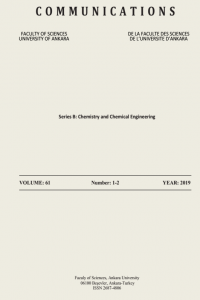DETERMINATION OF THE WORKABILITY OF CLAYS USING THE UPSET TEST
In ceramic industry, workability (or plasticity) is generally defined as the product of yield stress and maximum deformation without fracture. In the present study, yield point values for two clay bodies have been obtained from compression tests done without friction at the die contact surface. Maximum deformations to fracture, on the other hand, have been determined from local strain measurements of bulget surfaces of cylinders compressed with friction at the die contact surface. Workability indexes have been obtained from the products of yield stresses and maximum deformations. For both clay bodies studied, yield values decreased and amount of maximum deformation increased with increasing water content. Thus, the workability index showed a maximum determining the optimum water content. Forming limit line (FLL) technique, based on local strain measurements on the bulget surfaces of cylinders upset with friction at the die contact surface, form the basis for evaluating the workability of metals as a function of material variables. It also forms the basis for the analysis of workability in bulk deformation processes of metallic materials. In the present case, the FLL technique has been applied to ceramic bodies in determining their maximum deformation to fracture and a new easy-to-apply technique not necessitating the use of special equipment, has been developed for the determination of workability of ceramic bodies.
Keywords:
DETERMINATION, WORKABILITY industry,
___
- Communications Faculty of Sciences University of Ankara Series B Chemistry and Chemical Engineering
- ISSN: 1303-6017
- Başlangıç: 1948
- Yayıncı: Ankara Üniversitesi
